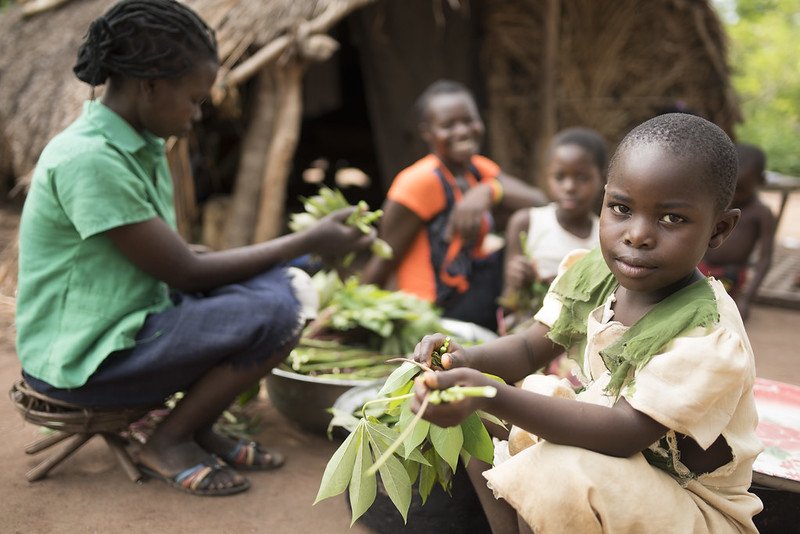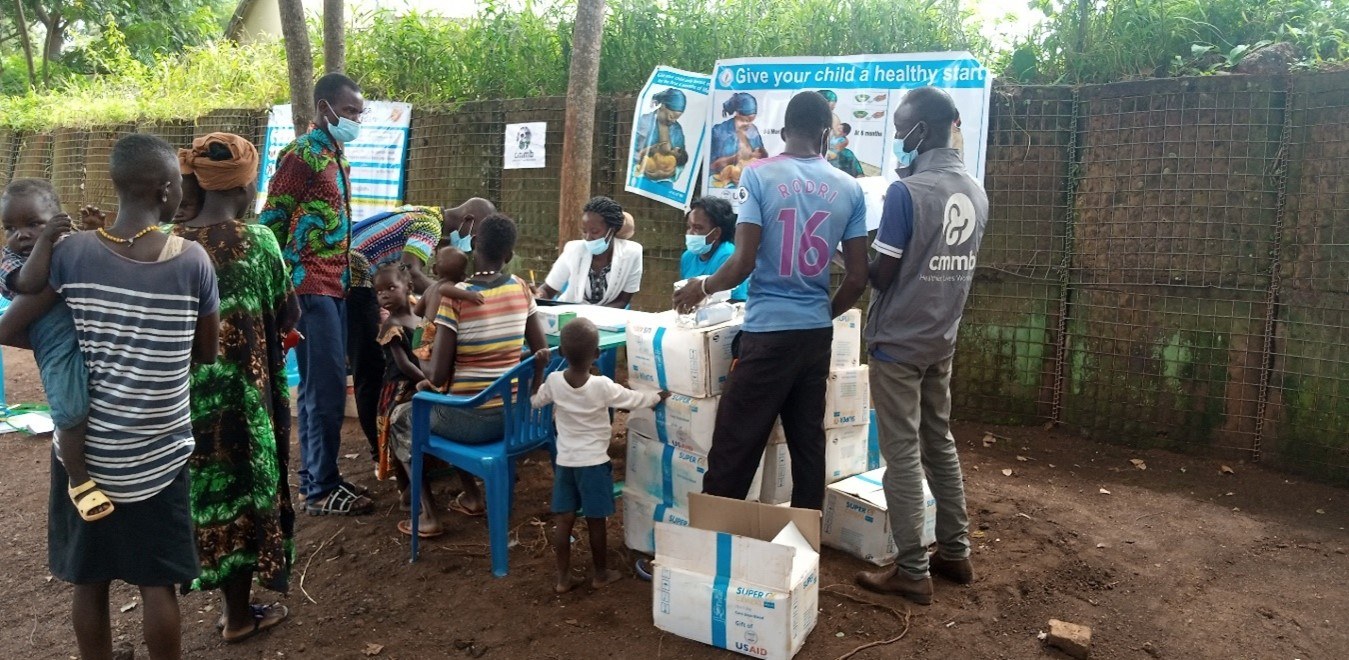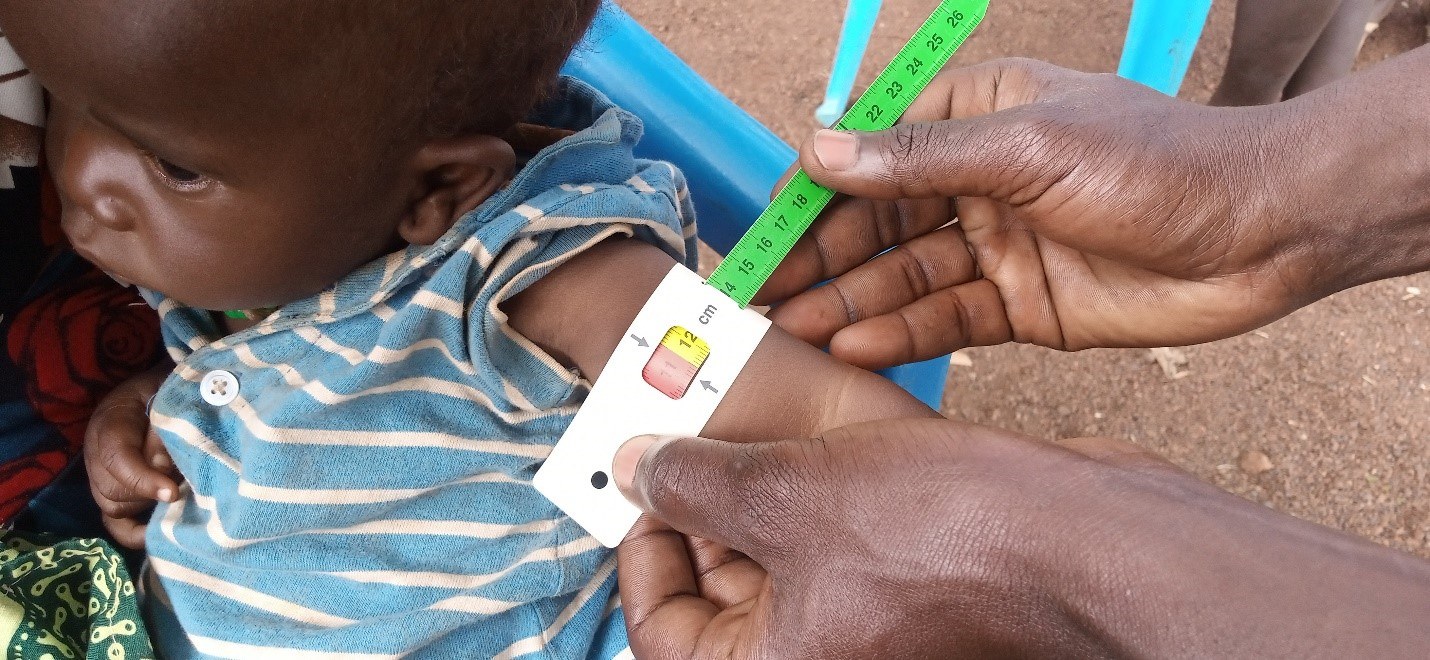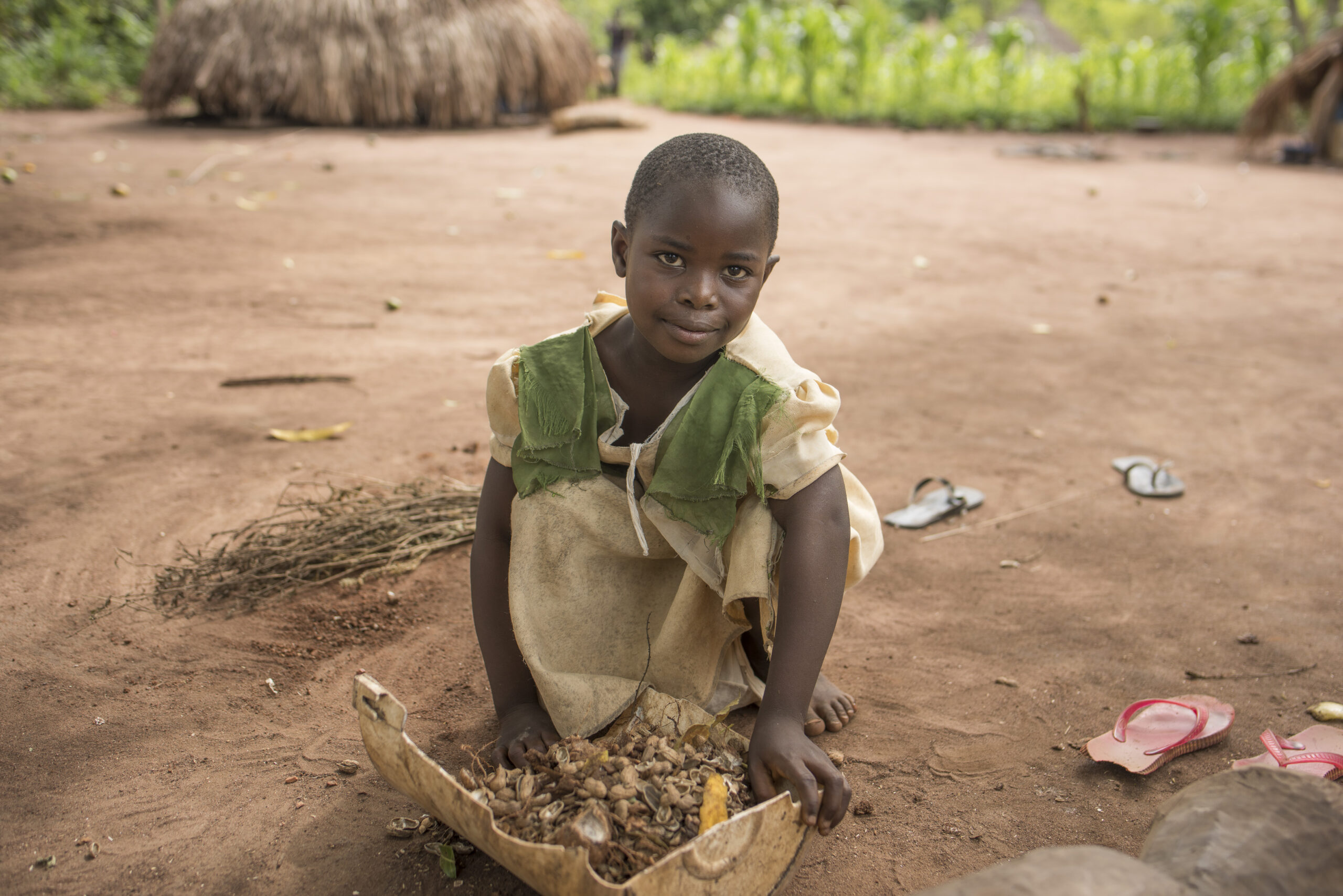How Intercommunal Conflict and Kitchen Gardens Impact Malnutrition in South Sudan

We recently had the opportunity to catch up with Natemo William Louise, CMMB’s Child Nutrition Program manager in South Sudan. Joining our mission in 2018, William has played a critical role in integrating our initiatives and expanding our impact—even in the midst of COVID-19.
In the interview below, William shares on how the situation with malnutrition is changing in South Sudan and the innovative ways the team is working to prevent malnutrition before it becomes an issue. He also shares how intercommunal conflict is affecting malnutrition.
Can you update us on how things are going on in South Sudan?
We are almost at the end of the year and it has been really challenging, but all in all we are able to progress. We are continuing to reach mothers and children who are facing acute malnutrition. Ensuring the implementation of maternal infant nutrition, which is a prevention package, is also going well. Despite COVID-19, we still toe the line.
We’ve been reading about how COVID-19 and the economic situation globally is really affecting nutrition. There is a real chance that more and more people are going to be at risk of severe acute malnutrition. Is this situation currently manifesting in South Sudan? Have there been changes at all?
Malnutrition is a big issue, especially when looking at all the problems that contribute to it. The most common child illness, diarrhea, is an issue that is really affecting the children’s nutrition. In our programming, we are dealing with severe and acute cases of malnutrition, as well as looking at medical complications.
There is also a local violent conflict which is causing people to flee their communities, bringing more children into the communities we serve. Our trends indicate that malnutrition is a concern for these displaced people and we are stretching our resources to provide services for this influx.
You’re seeing this conflict affect the nutrition of children and other people in a pretty significant way. The plan was really to reach 1,000 people with nutrition services, but because of this conflict you are now having to serve more?
Yes. This was already an emergency. When we are really stretched in terms of reaching above the additional caseload, we join responses and partner with other organizations to provide support. CMMB South Sudan hosts all the classes that deal with water and sanitation, health education, and food security.
So, because of the high numbers in our program, we reached out to UNICEF and other implementing partners to participate in these inter-agency humanitarian responses, ensuring interventions are done in a way that ensures the available resources do not run out.
Even currently, when the IDPs (internally displaced persons) are arriving in these areas, they have to be fast tracked and enrolled if they meet the criteria. It is a bit complex, but with the support of other agencies and other classes, we are able to really accommodate the needs.
It’s great that these partnerships are helping. It sounds like it would be a lot to deal with otherwise. What are your concerns about security and the people you are serving right now? What are your worries?
As these people flee their homes, sometimes psychosocial issues come in. I always work closely with the staff to ensure they provide counseling and support because they’re protection partners that can identify children who are separated with their loved ones. These are some of the areas that we always strengthen and I continue to encourage the beneficiaries to be really absorbed in the community.
“I always work closely with the staff, to ensure they provide counseling and support because they’re protection partners that can identify children who are separated with their loved ones.”
Do you think this is going to be a longstanding conflict or do you feel like things are going to start to get better? Is there really a way to tell?
There are always reports that I share and try to really understand the genesis of the conflict. I think if I look at the situation in the pandemic period, this intercommunal conflict can be resolved.
We are working collaboratively with our partners during these conflicts, so that our services are not really affected. There are other agencies that advocate for peace.
What do you want the donors and your other colleagues to know about the work you and your team are doing right now?
Currently I have a big team. The composition of the clinical research, nutritional research, nutrition assistance, and of community volunteers. This team sees the works down-up and up-down. From the community level to the management level and to the management level down to the community.
What I really want for my staff is to look at the context of COVID-19 here and remain updated. The changing context is that most of these guidelines are changing almost every time. In our coordination meeting, we always hear “lets change this today, tomorrow let’s come back here.”
From the donor side we require an increase of partnership in terms of resources. With such changing context, a lot of resources are required. Of course, with this surge in cases and the staff I have now, their capacity needs to be built because we are looking at the longer-term effects.
You previously shared a story with us about a little girl in the program who came in with severe acute malnutrition, got the treatment she needed, and got better. Are you seeing lots of kids right now? Are any of their stories really sticking out to you?
Yes. Currently we are trying to align the projects in a way to maximize the little resources we have. We have two areas of focus. One of the areas trains on the prevention of malnutrition. Prevention means looking at the first 1,000 days of life. This includes nutrition for pregnant mothers, exclusive breastfeeding, the optimal complimentary feeding, and then continuing breastfeeding after two years.
This is an area of focus at the moment. We have been approaching cases of malnutrition, by identifying and treating. What we are forgetting is prevention. Prevention is strengthening the community approach by ensuring mothers understand what the maternal diet is. We educate mothers on what they should do in the first six months of life, what they should do after the first six months of life, like complimentary feeding and breastfeeding.
We also roll out trainings for volunteers. We can get these trainings to almost all the counties where we send our nutrition staff and volunteers. It’s important that between volunteers, they understand that prevention is more important.
Prevention is also teaching mothers how to grow fast-growing vegetables. I think out of 29 nutrition centers, we have already established around 14 kitchen gardens in those facilities. These kitchen gardens will train a mother on different types of vegetables. Once this garden grows, the mothers will be able to go and do the same at home.
The food security partners have been able to assist some 40 mothers of children who had limited nutrition in the program. We give them seeds and some farm implements in partnership with the UN. That also helps us to understand how to do this type of prevention. If the mother knows how to cook and how to plant a certain vegetable, we then teach them on the nutrients and the value.
Once we have established these kitchen gardens, we now move into cooking demonstrations. Within this quarter, we are going to do around four cooking demonstrations with vegetables from the kitchen gardens. For example, we are looking at fast-growing vegetables, like kales, cassava leaves, pumpkins and so much more. They are all available. We use the menu of that particular area. We contextualize it to make sure we don’t bring in food that is not acceptable within the community. So, we are preparing. This will help mothers to also understand how to prepare as much as food that is available.
Kitchen gardens and these other preventative interventions seem to be a very new and empowering way to talk about nutrition. When we talk about nutrition, a lot of times we think of hungry children. Giving the mothers tools to prevent new malnutrition from even occurring is such an important way to think about this issue.
I know! This vision is still complex but are we are excited. Thank you.





